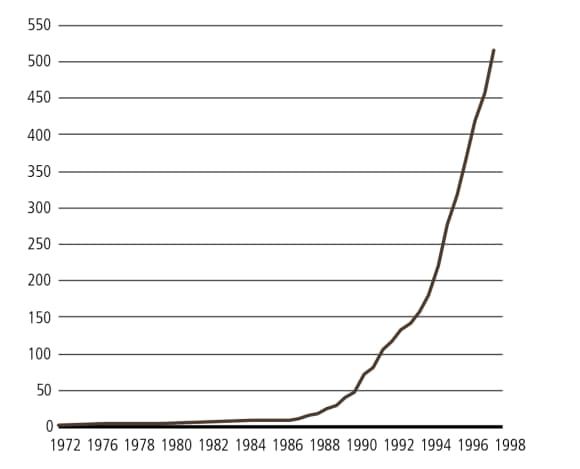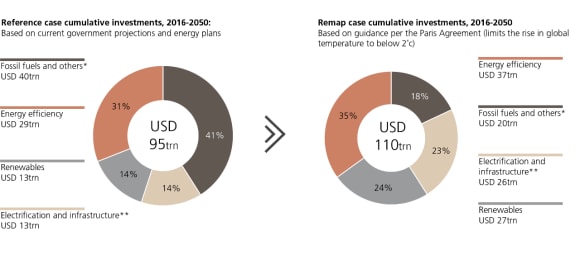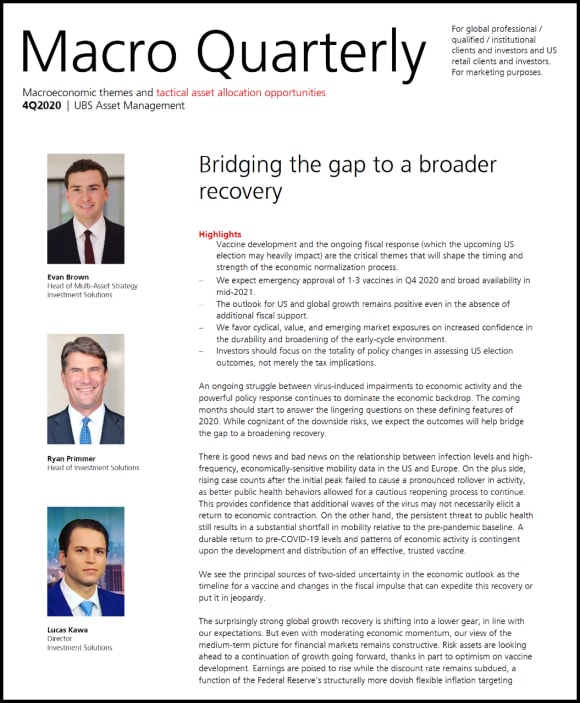3Q 2020 Quarterly Investment Forum How ESG is transforming markets
Global commitments to address Environmental, Social, and Governance (ESG) concerns are already triggering actions commensurate with the scale of the challenge.
The associated economic activity and financing needs provide ample opportunities for investors who apply an ESG lens to distinguish between companies that are well-positioned for this transition and those that are not.
Already, fund flows and price action are transforming towards alignment with an ESG world, which will continue to assume importance as a long-term driver of relative returns, with an evolving, expanding scope of influence.
What is QIF?
What is QIF?
The Quarterly Investment Forum (QIF) is an ongoing cross-investment team discussion and debate about the most relevant active risks in major markets and across asset classes and funds.
Each QIF is a mix of 'top down' and 'bottom up' perspectives, beginning with a 'top down' discussion of the major macroeconomic themes identified by the Asset Allocation Team. Each quarter, a rotating roster of portfolio managers present a 'bottom up' view of major active risks in their portfolios.
We have a unique depth and breadth of investment expertise across traditional and alternative asset classes in all regions globally. The QIF leverages that expertise through regular, structured communication between investment teams. The ultimate goal is to improve client outcomes.
3Q 2020 Quarterly Investment Forum highlights
3Q 2020 Quarterly Investment Forum highlights
COVID-19 another proof point for sustainable investing (SI)
COVID-19 another proof point for sustainable investing (SI)
The pandemic-induced tumult in risk assets should put to rest any lingering doubts over whether interest in ESG strategies could endure in the face of stressed market conditions. While the global fund industry suffered net outflows in the first half of 2020, particularly in the active space, SI-focused strategies continued to see net inflows. This demand resiliency is a testament to their performance during the volatility. ESG equity indexes generally posted superior results compared to their non-ESG peers, attributable to both an avoidance of fossil fuel companies and single-stock factors1.
The suite of features driving asset managers towards embracing sustainability integrated and focused initiatives has staying power. Institutional asset owners demand ESG considerations be taken into account in the investment process as a part of their fiduciary duty. Abiding by the swelling list of regulations pertaining to climate change and other objectives is a must. Investors are also seeking to minimize the reputational risk of being associated with companies that fall short on ESG, which tend to receive more negative news coverage. Most importantly, analyzing companies with an ESG analytical framework is increasingly viewed as an integral part of assessing longer-term investment risks that serve as a key determinant of performance.
How the regulatory ecosystem shapes market performance
How the regulatory ecosystem shapes market performance
The EU Taxonomy, a classification system for identifying environmentally sustainable economic activities, is among the highest-profile regulatory developments that promises to influence corporate decision-making and asset prices. Corporates and firms offering financial products in the EU will be required to disclose the amount of revenues/capital expenditures of their activities or portfolio holdings, respectively, that are Taxonomy-aligned; a Taxonomy score. Therefore, global asset managers with a European footprint are among the many companies that will be affected.
Going forward, this rubric can serve as a guide for targets that push corporations and investors towards activities and securities aligned with the achievement of desired environmental objectives. The Taxonomy is likely to bestow valuation premiums upon the handful of firms that have the best scores, fuel intra-industry dispersion based on relative scores, serve as an input to capital requirements thereby affecting the cost of capital, and, over time, provide sufficient data that helps passive ESG products gain more relevance. But in the near term, the Taxonomy provides significant opportunities for large, active asset managers that have the resources to do their own research and ascertain which firms have the desire and wherewithal to move their Taxonomy scores in the right direction as the regulations are phased in.
EU Taxonomy – What is it?
EU Taxonomy – What is it?
An EU classification system for environmentally sustainable economic activities
- Goal: Support six environmental objections
- Climate change mitigation
- Climate change adaptation
- Sustainable use and protection of water and marine resource
- Transition to circular economy, waste prevention and recycling
- Pollution prevention and control
- Protection of healthy ecosystems
- Eligibility and verification
- Tracking performance
The rise of regulation—cumulative number of global policy interventions
The rise of regulation—cumulative number of global policy interventions

Putting ESG at the center of fundamental analysis
Putting ESG at the center of fundamental analysis
The expansion of ESG data coverage is helping to rapidly mainstream ESG integration and adoption among practitioners. ‘G’ has long been a contributor to equity market performance, but ‘E’ and ‘S’ are assuming greater influence in relative returns. A firm or industry’s ESG footprint is also contributing to factor delineation. Notably, questions over the true value of decades of oil reserves have turned many fossil fuel companies into value traps.
Shift in initiatives offers potential investment opportunities
Shift in initiatives offers potential investment opportunities

As the world transitions toward the goals outlined by the Paris Agreement, there will be a shift in consumer behaviors, corporate decisions and dollars invested, which we believe will create a rich investment opportunity set both long and short that spans across decades.
The amount of capital expenditures required to transition to a lower-carbon economy and meet the Paris Agreement targets is creating sustained disruption across sectors and long-term actionable themes linked to the Energy Transition Economy. Supranational accords, in concert with government policies as well as shifting consumer and investor demands, are providing the basis for market differentiation between companies with earnings leverage to environmentally friendly themes like electrification and those who do not, or whose business models are too slow in adapting.
The energy sector is at the core of an ”E”-centric analytical framework, but the pertinent ripple effects extend far beyond it. For instance, building the necessary green infrastructure to cap the rise in global temperatures entails a steep rise in demand for a variety of base and other metals that would leave those markets in undersupply, auguring for higher prices.
The green spending delta tied to the outcome of the November US election has never been greater, with the potential to materially sharpen focus on ESG as a catalyst for economic activity and asset market returns. A potential “Blue Wave” would likely unleash impactful spending on green initiatives, result in the US rejoining the Paris Agreement, a reset at the EPA, and geopolitical developments that contribute to lower oil prices.

Make an inquiry
Fill in an inquiry form and leave your details – we’ll be back in touch.
Introducing our leadership team
Meet the members of the team responsible for UBS Asset Management’s strategic direction.
